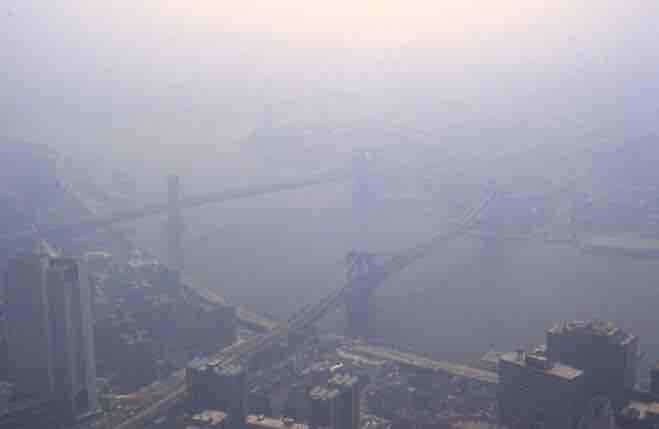Photochemical smog is a major contributor to air pollution. The word "smog" was originally coined as a mixture of "smoke" and "fog" and was historically used to describe air pollution produced from the burning of coal, which released smoke and sulfur dioxide. Nineteenth and 20th century London was particularly well-known for this type of air pollution. The "Great Smog of 1952" was identified as the cause of over 4,000 deaths in London. While air pollution caused by burning coal has become less common, the combustion of fossil fuels continues to affect air quality.

Smog in London during the 19th and 20th centuries
Claude Monet made several trips to London between 1899 and 1901, during which he painted views of the Thames and Houses of Parliament which show the sun struggling to shine through London's smog-laden atmosphere.
What Causes Photochemical Smog?
The components of photochemical smog were established during the 1950s. This type of air pollution is formed through the reaction of solar radiation with airborne pollutants like nitrogen oxides and volatile organic compounds. These compounds, which are called primary pollutants, are often introduced into the atmosphere through automobile emissions and industrial processes. Ultraviolet light can split nitrogen dioxide into nitric oxide and monatomic oxygen; this monatomic oxygen can then react with oxygen gas to form ozone. Products like ozone, aldehydes, and peroxyacetyl nitrates are called secondary pollutants. The mixture of these primary and secondary pollutants forms photochemical smog.
Both the primary and secondary pollutants in photochemical smog are highly reactive. These oxidizing compounds have been linked to a variety of negative health outcomes; ozone, for example, is known to irritate the lungs. Smog is a particular health danger in some of the world's sunniest and most populated cities, such as Los Angeles; Los Angeles is typically sunny, and the sun reacts with the chemicals produced by cars and other industrial processes. Smog can also affect areas of the country that are sunny less frequently, such as New York City. In fact, most major cities have problems with smog and air pollution.

Smog in New York City
Photochemical smog is composed of primary and secondary pollutants. Primary pollutants include nitrogen oxides and volatile organic compounds as a result of industrial processes, while secondary pollutants are created through the reaction of primary pollutants with ultraviolet light.